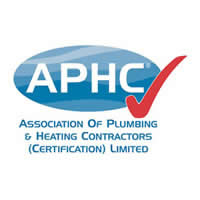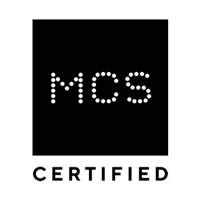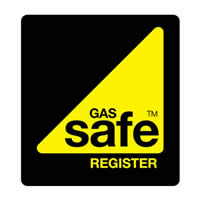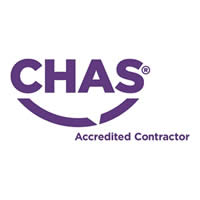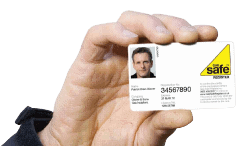In order to achieve that, you’ll need a knowledgeable team of architects, builders and renewable energy specialists with proven green credentials. The planning should be meticulous and if you aren’t using a pre-approved self-build plot, you’ll need to hire a qualified ecologist to assess the grounds, who can also provide a Ecology survey and then a mitigation report prior to applying for planning application.
The construction of the property should be carried out specifically in a way that honours local biodiversity and implements all relevant renewable energy technology to the property.
An example of that could be that the house is built with window and rooms positioned facing the south, to ensure you are maximising the suns power with natural heat and collection of energy via solar panels.
Other Key Self Build Eco Considerations Are:
- Eco bricks – The raw brick co. is an innovative company making bricks from waste. Hempcrete is another bio-composite material from the hemp plant. Either of these can be used in construction to replace concrete., which is currently emitting a whopping 2.8 billion tonnes of CO2 each year. (source: guardian)
- Whilst on the topic of concrete, a recent grand design magazine article highlighted the many advantages of Insulated Concrete Formwork (ICF). Hailed as the new ‘no brainer’ for self build designs, ICF is ‘intelligent thermal insulation systems that make houses incredibly energy efficient, while being relatively simple and fast to construct”.
- Appropriate bio-insulation such as sheeps wool, should be chosen to keep heat from escaping. Good insulation can save homeowners £150 a year in energy bills in traditional homes but is a must in new build homes
- Installing well sealed, triple glazed windows can reduce heat loss by 10% or more.
- Low-emissivity glass has special coating that reflects heat back into the property.
- Underfloor heating is the perfect match for heat pump, keeping temperatures stable and consistent. You also lose the need for radiators lending more floor space to the overall design
- LED lighting is 90% more efficient than fluorescent lighting
- Energy efficient appliances with energy rating A++ are becoming more affordable and a must for the eco self builder
- Eco friendly décor using environmentally friendly water based paint like farrow & ball removes harmful fumes in manufacturing and application. Likewise, eco conscious wood varnishes and waxes are also available for floors. You can even get sustainable wallpaper made from hessian or cotton as a part of your home styling for the truly sustainable modern home
- Mechanical Ventilation and heat recovery (MVHR) is a clever way to reduce your heating requirements by up to 40% with homeowners reporting they almost never use their heating. It works by maintaining the existing heat already in the home from people living there. The insulation is so efficient there is almost no heat loss, meaning no heat needs to be added. The house is consistently warm and filled with fresh filtered air. This technique is used in the famous Passivhaus design
- Using reclaimed materials for your self build project is a great way to make use of waste and stopping it going to landfill. You can source your reclaimed materials directly from demolition sites, which invariably ends up saving you money as well.
Directly Improve Air Quality
Stats on air pollution in the UK are pretty scary. In fact, an estimated 40 thousand premature deaths per year could be prevented by improving air quality to safe levels.
An air quality landmark ruling last year, said that 9 year old Ella Adoo-Kissi-Debrah was unlawfully killed by inhaling the air pollution around her South London home. Needless to say, the government is under increasing pressure to introduce stricter policies to improve air quality. In response to the verdict, a government spokesperson said
“We are delivering a £3.8bn plan to clean up transport and tackle NO2 pollution and going further in protecting communities from air pollution.”
When you build your own home using renewable energy, you are dramatically decreasing your contribution to air pollution. By not burning fossil fuels such as gas, oil and coal via home heating and electricity, you are no longer pumping poisonous gasses into the atmosphere. This benefits you, your entire community and the future health of the planet.
Carbon Neutral Homes Will Eventually Become Law
From January 2020, the government reintroduced the environmental bill, which requires developers deliver at least 10% improvement in the biodiversity of the land intended. The bill clearly intends to back up the government brainstorm to ‘leave the planet in a better state that which we found it’.
Existing strict building regulations like Document-L, mean that high levels of energy efficiency in new builds are already a requirement, but things are hotting up.
Aside from that, the government’s 10 point climate crisis action plan launched in November 2020, includes a clear intention to move away from fossil fuels and to invest heavily into green energy technology.
Point 7 of the 10 point plan specifically talks about green buildings:
“We will put our homes, workplaces, schools and hospitals at the heart of our green economic recovery… Making our buildings more energy efficient and moving away from fossil fuel boilers will help make people’s homes warm and comfortable, whilst keeping bills low. We will … set a clear path that sees the gradual move away from fossil fuel boilers over the next fifteen years as individuals replace their appliances and are offered a lower carbon, more efficient alternative.”
Needless to say, 15 years is not a long time. Much like the petrol and diesel car ban in 2030, we predict that to reach net zero targets by 2050, homes that are powered by fossil fuels will become unlawful too.
You’ll Be Independent Of The National Grid
It is possible to go off grid entirely with renewable energy, which means no more black outs, no more price increases and a feeling of pride that you are totally self-sufficient.
Of course, nothing is ever easy. To be completely independent of the national grid, a single renewable technology won’t be enough. A combination of storage battery, solar pv and heat pump will likely be required to match the usual energy needs of a typical household on grid.
Eco friendly Mortgages
Building societies and banks are starting to catch on to environmentally friendly property, but it can still be tricky to find competitive mortgage rates for eco properties.
Luckily there are specialist building societies like the Ecology Building Society that offer favourable rates to homes that have high energy efficiency and low carbon emissions. The higher your homes energy rating, the better the discount.
Conclusion
Depending on what you hope to achieve with renewable energy, it’s clear that the technology is now available and inviting for those thinking about how to start a self build project.
It’s anticipated that over 80% of domestic building capacity will be met by 2050, so there is limited time for new build housing on new land. Addressing our existing buildings and making them more energy efficient is also another big part of the plan to become net zero in time to meet our target.
While the financial incentives are attractive, they won’t last forever – the current BUS grant is currently due to end in 18 months at time of writing. We cannot be certain this money will still be in the pot after the deadlines end, but renewable heat prices should continue to fall, completing the transition to affordable clean energy.
If you’re embarking on a self build project in 2023, get in touch. Our fully qualified installers are second to none and our expert renewable heat advisors can guide you through the best options to save you money and get your new home as efficient as possible. Here’s to a net zero decade!

